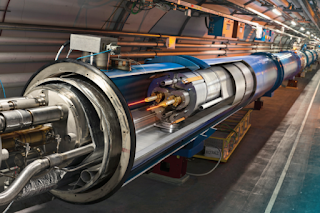First post for a while so why not start with some Hadron information!
The Large Hadron Collider at the European Organization for Nuclear Research (CERN) has completed its 2016 proton run. In a statement released Tuesday 1st November, CERN stated that the LHC (the world’s largest particle accelerator) surpassed its luminosity target during this year’s run, which began in May.
Luminosity, measured in inverse femtobarns, is a measure of the total number of proton-proton collisions. One inverse femtobarn corresponds to roughly 100 trillion collisions.
In its 2016 run, the LHC achieved luminosity of 40 inverse femtobarns — much higher than the initial target of 25 inverse femtobarns.
In the final weeks of the collider’s proton run, the researchers dialed down its luminosity to study a phenomenon known as “elastic scattering” wherein two protons survive their encounter intact, without colliding head on, with only a slight change in their direction. Elastic scattering cannot be observed during normal, “high luminosity” LHC runs, when protons are more likely to crash into each other and create new particles.
Scientists hoped that observing this process would provide them vital clues to how quarks are distributed within protons.
While the latest run of the LHC yielded more precise measurements of processes falling within the ambit of the Standard Model, a framework that describes three of the four known fundamental forces and provided observations of the famous Higgs boson at the unprecedented energy of 13 teraelectronvolts, it drew a blank insofar as the search for new particles is concerned.
In particular, a tantalizing “bump” in 2015 data at 750 gigaelectronvolts, which had been previously detected by the ATLAS and CMS detectors, did not resurface in the much larger 2016 dataset, suggesting that it was, in all probability, the result of a statistical fluctuation.
“We're just at the beginning of the journey,” CERN Director-General Fabiola Gianotti said in a statement released in August. “The superb performance of the LHC accelerator, experiments and computing bode extremely well for a detailed and comprehensive exploration of the several TeV energy scale, and significant progress in our understanding of fundamental physics.”
















0 comments:
Post a Comment